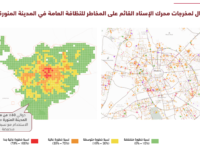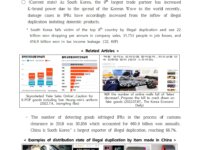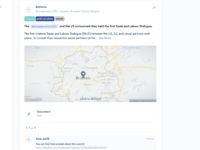The provision of European funding for economic recovery after the pandemic favored the provision of significant aid to citizens that needed to be managed quickly to ensure financial sustainability. Previously, this was done manually, which caused difficulties in resolving them in due time and form. For this reason, the aid robotization process was implemented to speed up the procedures, releasing administrative burdens and responding to citizens' requests in an agile and efficient way.
Innovation Tag: Artificial Intelligence (AI)
As part of Gov. of Canada ininitiatives to measure regulatory burden, ministries have to report their Administrative Burden Baseline (ABB) a metric calculated using a decision tree based on the text of regulations. This is a long and tedious process that requires combing through regulation and manually parse individual provisions. The Regulatory Evaluation Platform automates that process (it takes seconds v. weeks when done manually) and makes it more timely by allowing for weekly refreshes.
MoMRAH, is mandated to manage the Saudi cities, from regulation to operation, including commercial, construction activities, and municipal assets of streets, parks…etc That, translates into +50k km² of urban land, +550K streets, +500k commercial licenses… All that, is inspected with
Satellites collect images that can be used to identify deformations of infrastructure at millimetre level with InSAR analysis. This project investigates the use of InSAR in the monitoring of deformations of bridges. Can InSAR be of added value for a structural health assessment of bridges which, with aging assets over the largest part of Europe, becomes more and more critical? Nowadays the monitoring of bridges is very labour intensive and often not without danger. InSAR may reduce this.
AFSA regulates the bankruptcy system in Australia. The system is designed to support those in vulnerable situations due to circumstances beyond their control. However, there are bad actors who exploit the system by hiding assets/income. Using our risk-based regulatory approach, we have designed a system that uses an applicant's data and validates it against external data sets to detect potential misconduct. We aspire to build a data model to predict non-compliance at the system entry point.
Public sector agencies are generating more video/image data but much of the data is not leveraged due to the high overheads and custom requirements in processing video. The VAS platform provides easy access to a spectrum of in-house and industry developed video analytics capability as well as model prototyping capabilities for agency use cases. The key innovation focus on bringing together a scalable platform, lowering the barrier of entry for usage of video analytics, empowering the pub
New Zealand wants our small businesses to be the most digitally enabled in the world. Digital Boost helps owners and employees to build confidence and skills to digitally transform their businesses. Cynefin complexity theory, agile programme development, and public-private partnerships are used to deliver easily accessible learning and services. This includes bespoke playlists of video content, online diagnostic tools, peer-learning support and free or discounted digital equipment or services.…
Trend Atlas is a digital, interactive platform with rich insights on local and global trends and emerging signals to inform strategic planning, policy development and service redesign. It reduces research time, rework and duplication by breaking down information silos with centralised data and evidence. Built by policy people who upskilled in digital, it combines automation and curation with a sustainable contributor model to create a collaborative and trusted strategic intelligence service.
The project is subject to uncovering illegal duplication in advance from overseas inflow through the AI Reading System in the process of customs clearance cooperated with Korea Customs Service. No. of uncovering illegal duplication per annum exceeds 400,000 cases and the demand for AI system is high due to lacking manpower for customs inspection and the explosive increase in importing goods. This AI system has been developed from 2020, and proving its performance in two customs office in Korea.
Anticipate is a tech-enhanced tool for context monitoring and early warning of conflict. Anticipate fights bias in analysis by encouraging analysts to be forward-looking and removing echo-chambers. It hosts data collection, political-economic analysis, and anticipation in one place. As such, it is a one-stop shop for the public sector to develop policy.





